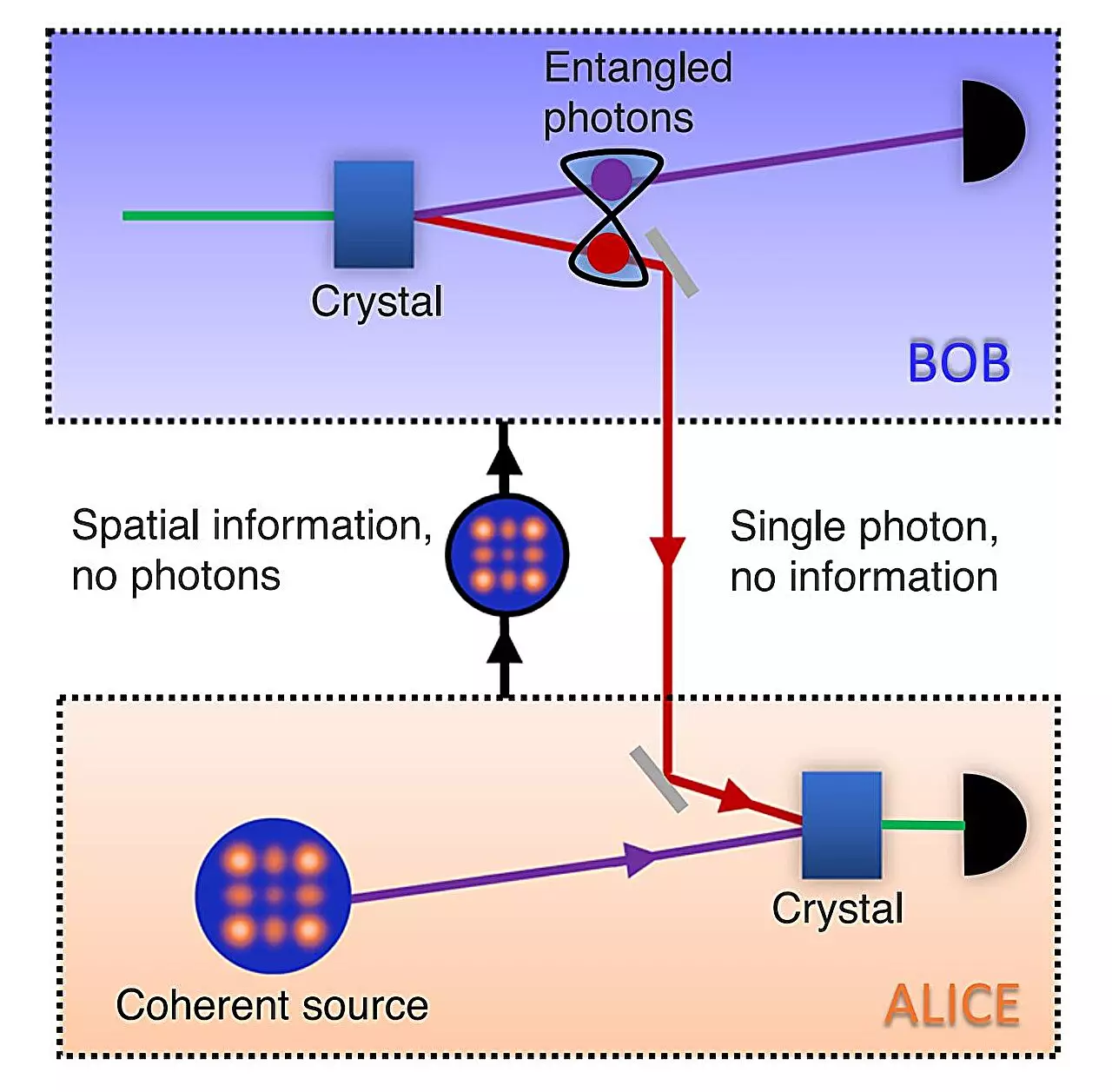Quantum teleportation has long captured the imaginations of science fiction enthusiasts, with iconic references in popular shows like “Star Trek.” Now, a breakthrough study published in Nature Communications by an international team from Wits and ICFO has brought us one step closer to realizing this fascinating technology in the real world. The team’s research demonstrates the teleportation-like transport of light patterns, allowing for the transfer of images across a network without physically sending them. This achievement opens up exciting possibilities for the development of high-dimensional quantum networks and significantly enhances the security of quantum communication.
Quantum communication over long distances plays a crucial role in ensuring information security. Previous studies have successfully demonstrated quantum communication using two-dimensional states, known as qubits. However, these qubits can only represent binary information, with each qubit encoding a 1 or a 0. In contrast, quantum optics offers the potential to describe more complex systems in a single shot, such as unique fingerprints or even entire faces. The traditional approach to quantum communication involves physically sending information from one party to another. In this study, the researchers aimed to eliminate the need for physical transmission and achieve teleportation-like transport of high-dimensional states.
The team’s groundbreaking research marks the first experimental demonstration of the quantum transport of high-dimensional states using just two entangled photons. By utilizing a nonlinear optical detector, the researchers were able to overcome the requirement for additional photons while enabling the transport of various patterns. The team achieved a state-of-the-art of 15 dimensions, with the potential for scalability to even higher dimensions. This significant advancement paves the way for the establishment of quantum network connections with remarkable information capacity.
Imagine a scenario where a customer wishes to send sensitive information, such as a fingerprint, to a bank. In traditional quantum communication, the customer must physically transmit the information to the bank, making it susceptible to interception, despite security measures. However, in the newly proposed quantum transport scheme, the bank sends a single photon, one of an entangled pair, to the customer, devoid of any information. The customer overlaps the photon on a nonlinear detector, combining it with the information to be sent. Consequently, the information seemingly teleports to the bank without any physical transmission. Importantly, the exchange of quantum entangled photons establishes a quantum link between the parties, rendering interception futile.
While the teleportation achieved in this experiment possesses the key characteristics of true teleportation, an essential ingredient is still required: a bright laser beam to ensure the efficiency of the nonlinear detector. Overcoming this limitation would enable a more strictly defined teleportation process. Nonetheless, the current configuration already presents a pathway for connecting quantum networks and unlocks the potential of nonlinear quantum optics as a valuable resource. The researchers hope that this experiment will motivate further advancements in the field, with the aim of developing a comprehensive quantum implementation.
The team behind this groundbreaking research plans to continue their efforts towards quantum transport across an optical fiber network, taking the next significant step in this exciting journey. They acknowledge the indispensable contributions of Dr. Bereneice Sephton from Wits, who played a vital role in getting the system to work and conducting key experiments. Her determination and comprehensive skill set made this progress possible. Dr. Adam Vallés from ICFO (Barcelona), one of the project leads, emphasizes that the current experimental configuration can already establish a high-dimensional secure channel for quantum communication between two parties, provided the protocol does not require single photons. Nonetheless, resolving the challenge of preventing a cheating sender from retaining copies of the teleported information remains an area of future focus.
The teleportation-like transport of light patterns achieved in this study represents a significant leap towards realizing high-dimensional quantum networks. By eliminating the need for physical transmission of information, this research enhances the security and possibilities of quantum communication. Although challenges remain, the team’s groundbreaking experiment opens new frontiers for nonlinear quantum optics and motivates further advancements towards a full quantum implementation. The world of quantum teleportation is evolving, and its potential impact on information security and communication is immense.


Leave a Reply